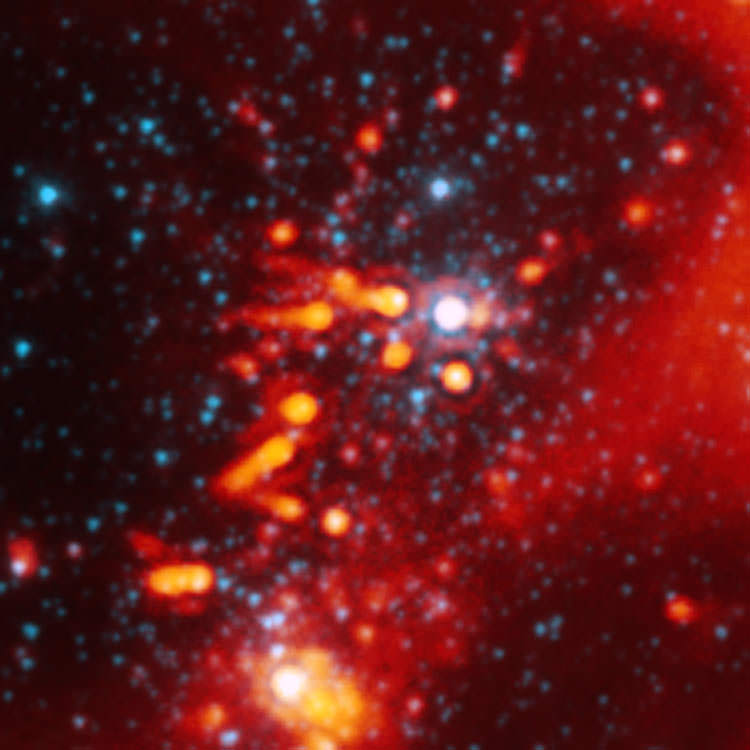Here’s this week’s image for the Where In The Universe Challenge, to test your visual knowledge of the cosmos You know what to do: take a look at this image and see if you can determine where in the universe this image is from; give yourself extra points if you can name the instrument responsible for the image. We’ll provide the image today, but won’t reveal the answer until later. This gives you a chance to mull over the image and provide your answer/guess in the comment section. Please, no links or extensive explanations of what you think this is — give everyone the chance to guess.
UPDATE: Answer has now been posted below.
This image shows a portion of the W5 star-forming region, located 6,500 light-years away in the constellation Cassiopeia. It is a composite of infrared data from Spitzer’s infrared array camera and multiband imaging photometer. It shows the nasty effects of living near a group of massive stars: radiation and winds from the massive stars (white spot in center) are blasting planet-making material away from stars like our sun. The planetary material can be seen as comet-like tails behind three stars near the center of the picture. The tails are pointing away from the massive stellar furnaces that are blowing them outward.
The image was taken in 2008, and is one of the best examples of multiple sun-like stars being stripped of their planet-making dust by massive stars.
Check back next week for another WITU challenge!


Spitzer images of our galactic center. (I watched Science Channel last night and have supermassive black holes on the brain.)
(Well not literally, that would hurt.)
FOCUS!!
It’s the active star-forming region W5, in the constellation Cassiopeia, as seen by the Spitzer Space Telescope.
Those are sperm cells, trying to breach the Egg.
What? No? But they are!
This is the galaxy center. The UCLA Galactic Center Group has some interesting results, including a movie of stellar motion near the SMBH at the center.
LC
Jorge: They very well could be sperm and egg… for Space Whales! =P
Dave: Wasn’t that a Voyager episode?
Sagitarius A. No idea where the pic comes from.
This Chandra image of Sgr A* and the surrounding region is based on data from a series of observations lasting a total of about one million seconds, or almost two weeks. Such a deep observation has given scientists an unprecedented view of the supernova remnant near Sgr A* (known as Sgr A East) and the lobes of hot gas extending for a dozen light years on either side of the black hole.
I’m with ubuntu.
It looks like SagA*… showing the stars moving quickly around it.
If I had to guess the source, I would say it is a X-ray image from Chandra.
A part of the W5 star- forming region. It is a composite of infrared data, taken by the Spitzer Space Telescope.
Andromeda is right.
It’s the W5 area. We see a bright OB star destroying the protoplanetary disks of nearby systems.